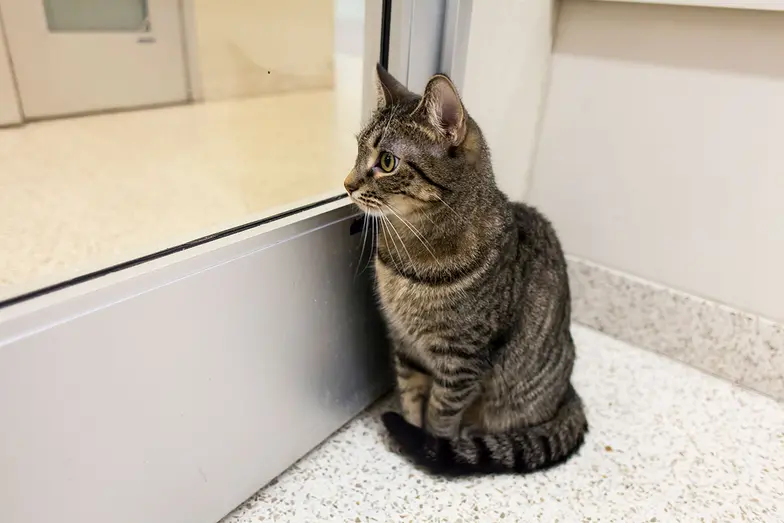Feline Spectrum Assessment in 4 Steps

FSA is a four-component process that helps shelters know more about cats who enter with unknown histories and see how comfortable they are around people.
FSA (Feline Spectrum Assessment) is a fast, simple procedure that grew out of the ASPCA’s “Is This Cat Feral” research.
A cat’s response to FSA can inform options such as adoption, foster, behavior modification, working cats and return to field.
The procedure takes about five minutes per cat, per session. And depending on what behaviors show up, it may be repeated four times across three days.
The Four FSA Assessment Items
1) GREET
The Greet item is the cat’s first interaction with the evaluator for that time period. It can evoke a friendly interaction in cats more acclimated towards people and can also give more frightened cats a chance to get used to the evaluator and begin to relax a bit. It was designed to be the least intrusive of the assessments.
2) HAND ON CAGE AND CRACKING THE CAGE DOOR
This item provides a bit more stimulation for the cat than the Greet item. It can evoke a friendly interaction in cats more acclimated towards people and can give more information about a cat’s level of sociability toward people, since opening the cage door may signal an opportunity for cats to interact.
3) INTERACTIVE TOY
Following the principle of least to most invasive, this item may inspire some cats to interact with the evaluator if they need more encouragement than in previous assessment items. This item can also provide more insight as to the cat’s level of acclimation toward people.
4) TOUCH WITH WAND
The wand is a way of physically touching the cat without risk to the person, possible transmission of disease between cats, or opening the cage door enough for the cat to try to escape.
